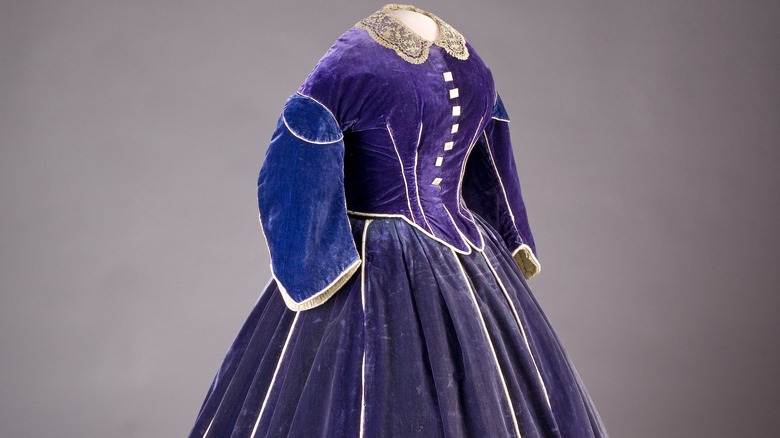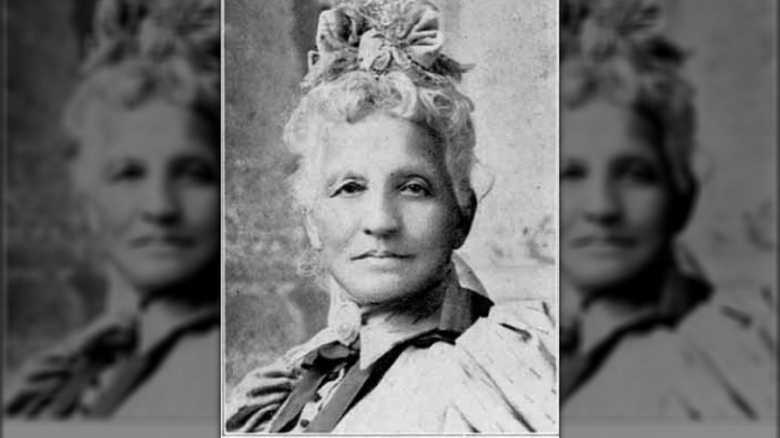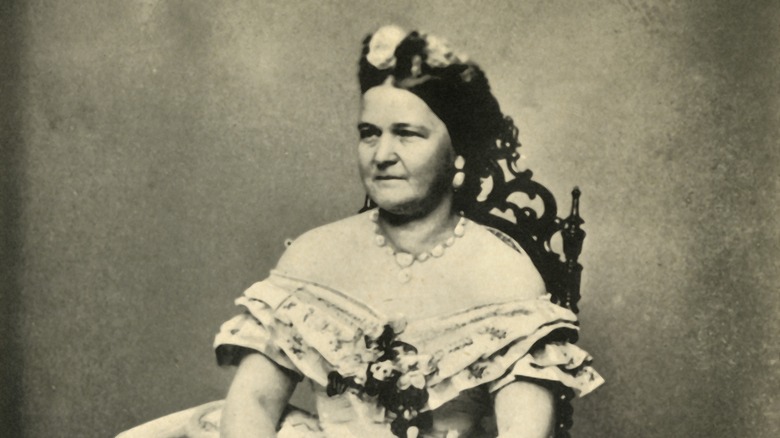The History Behind Mary Todd Lincoln's Famous Purple Velvet Dress
When Mary Todd Lincoln spilled coffee on her dress she set off a series of events that led to an unusual friendship. The First Lady had only recently arrived in Washington, D.C., and she needed a new dress right away for a reception the day after the inauguration of her husband, Abraham Lincoln, in March 1861, according to "Behind the Scenes, Or, Thirty Years a Slave and Four Years in the White House."
A friend of the first lady suggested Elizabeth Keckley (also spelled Keckly) could make her a new dress. When Keckley arrived at the White House for their meeting, her heart sank seeing that three other dressmakers were there for the same reason. "With so many rivals for the position sought after, I regarded my chances for success as extremely doubtful," Keckley later recalled. But her meeting with the First Lady would lead to a close relationship between Keckley, a former enslaved person, and Mary Lincoln, the daughter of a slaveholder. Their relationship would also produce, among many gowns, a famous purple velvet dress that Mary Lincoln wore during her first winter in the White House, according to the Smithsonian.
[Featured image by Smithsonian Institution Archives, Bequest of Mrs. Julian James | Cropped and scaled | CC BY-SA 3.0]
An African American dressmaker
Elizabeth Keckley was born in Virginia in 1818, the daughter of an enslaved woman and a plantation owner, Colonel Armistead Burwell, according to the White House Historical Association. Like her mother, she too was enslaved. Her skills as a seamstress and dressmaker helped pay for her freedom and that of her son George in 1855. By the time she moved to Washington, D.C., in 1860, she had made a name for herself in St. Louis where she had been living. Mary Lincoln was already aware of Keckley and her skills from the First Lady's friends there before their fateful meeting at the White House, per "Behind the Scenes."
The purple velvet dress Keckley made for Mary included white satin piping and mother-of-pearl buttons, per the Smithsonian. Mary wore the dress during the important winter social season of 1861 to 1862, during the first year of the Civil War. Like all Keckley's gowns, it was "pared down and sophisticated," according to Elizabeth Way, a former Smithsonian researcher. "Her designs tended to be very streamlined," she told Smithsonian Magazine. "Not a lot of lace or ribbon. A very clean design."
Where is it now?
Following the assassination of President Abraham Lincoln in April 1865, Mary Lincoln moved to Chicago and convinced Elizabeth Keckley to come with her for a short time. They kept in touch after Keckley's return East, but their relationship faltered and eventually ended for reasons that included Keckley's decision to write an autobiography that included details of her friendship with the Lincolns, per the White House Historical Association. Mary, who only wore mourning clothes until her death in 1882, did not need much of her finery and gave her cousin Elizabeth Todd Grimsley the purple velvet dress, according to the Smithsonian. Grimsley was close to her cousin and lived in the White House helping out with their children for the first six months of Lincoln's presidency, as told by Mr. Lincoln's White House.
The Smithsonian came into possession of the dress in 1916 after Grimsley's son, John, sold it to the New York philanthropist Cassie Mason Myers James, per Smithsonian and Find A Grave. After James' death in 1922, she bequeathed the dress that had already been on loan to the Smithsonian along with other related historically important items she had collected, according to Object of History. Keckley's purple velvet dress is one of only a few known surviving gowns she created over the years before her death in 1907.


